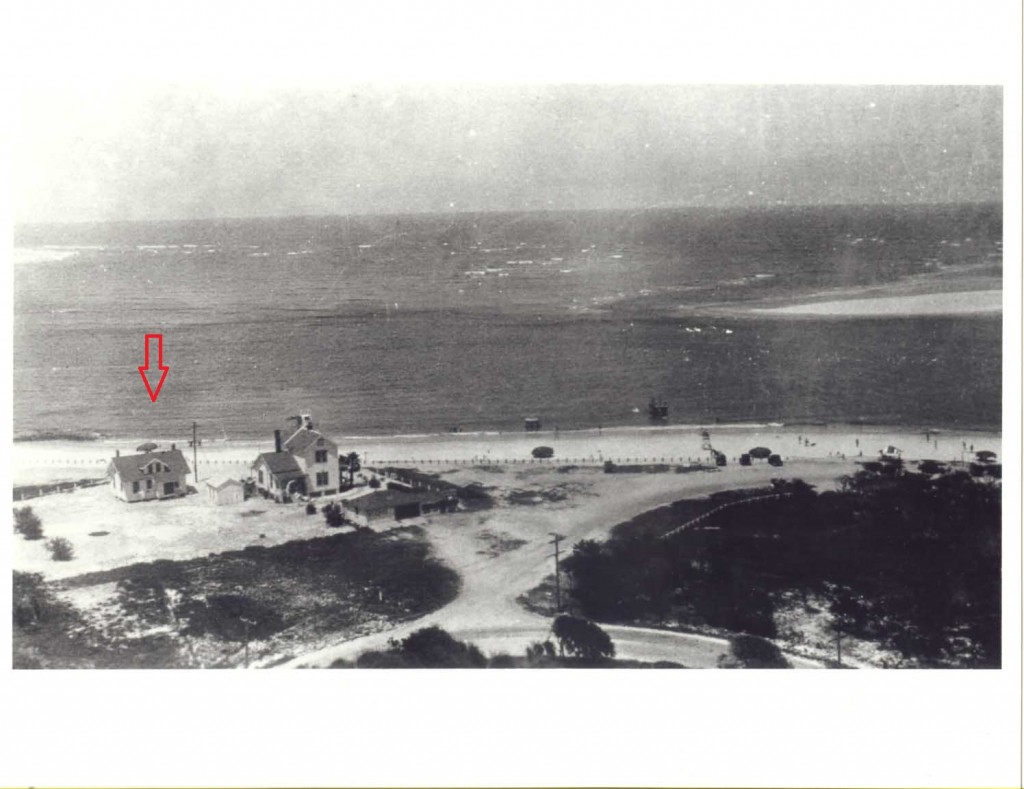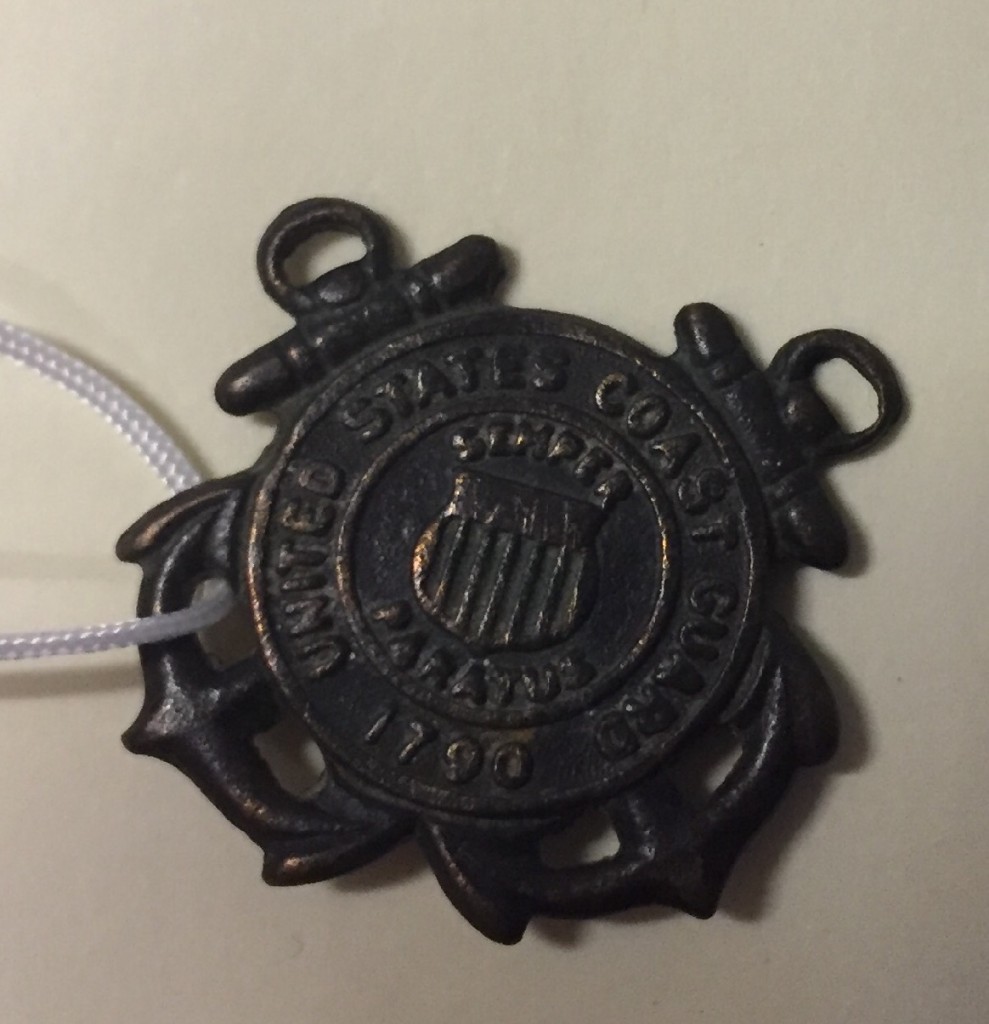Each month, we will be showcasing a different piece from our Museum collection. Outside of the artifacts on exhibition at the Lighthouse, we have hundreds of other historic pieces that are preserved in our collection.
This small pin is a U.S. Coast Guard (USCG) collar/hat pin.
The pin is a screw version as opposed to a clasp version made of brass. The design has the USCG emblem and is consistent with pins that were worn during WWII. This particular one is missing the back portion that would have kept it secure on the uniform more about this later in the story.
These collar pins were typically worn by members of SPARS (USCG Women’s Reserve) and USCG Auxiliary (sometimes referred to as shore establishment) during WWII. SPARS was formed in 1942 to help recruit women that would replace men on the home front for the war effort.
The USCG Auxiliary was essentially created by the Coast Guard Reserve Act of 1939. During WWII the reserve was restructured into two categories: regular reservists and temporary reservists. The temporary reservists were the volunteer section of the Auxiliary, which served in designated geographic areas whereas the regular reservists were paid and could be stationed anywhere by the Coast Guard. The volunteer reservists were also encouraged to bring their boats too!
The overall size of this object is about one inch all around and has a fairly well-developed patina. So, even just an initial examination of the object one can tell it has been in the elements and not part of a personal collection. Had it been part of a larger uniform collection there certainly would have been some evidence of repetitive polishing and care.
From a conservation perspective the object is in good shape. The developed patina actually aids in the preservation of the object. This oxidation essentially creates a layer of protection and in a stable environment no further corrosion or deterioration will occur. So, the lesson is you typically do not polish objects because in removing the tarnish you are removing a small amount of the object and exposing a new surface for new oxidation and deterioration.
How did this become part of the Lighthouse collections? The object became part of the Lighthouse collections in 2003 when it was donated by Nancy Powers who was born and raised here in St Augustine.
The pin’s history is very interesting.
According to our records, Ms. Powers found it in the gravel driveway of the “little white house” when it was still located at 1 Holly Lane in the original location. This home (little white house) historically was part of the U.S. Navy (USN) wireless station on Anastasia Island, and was located just northeast of the Lighthouse. 
The USN wireless station was first used in 1905, however, was no longer in use in 1930s. The government later sold the property after WWII. As we dive (or perhaps dig since this find is on land) a little deeper into this story, the wireless station was acquired by Mr. Thomas Keegan, who was Ms. Powers uncle. Mr. Keegan was the known caretaker of the nearby coquina quarry pits and Anastasia Park (previous to being a State Park), and it was during this time that he purchased the property. The property changed hands again when Ms. Powers inherited the wireless station property along with her sister Phyllis in the early 1970s.
Eventually, the little white house was sold and moved further down the road. It is not known exactly when the pin was recovered.
It is hard to imagine this pin lying in a driveway made of gravel for perhaps decades. The condition is still very good, with the exception of the backing pin broken and missing. Which probably malfunctioned and led to the Coast Guard pin landing in the driveway? However, how and when it was lost still is a bit of a mystery.
Jason Titcomb is the Chief Curator for the St Augustine Lighthouse & Maritime Museum. He holds a graduate degree in anthropology from Iowa State University.


